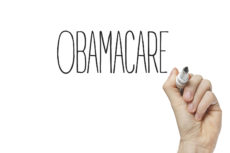John R. Graham • Thursday, August 4, 2016 •

Dr. Bob Kocher, an Obamacare architect turned venture capitalist, has admitted the law has had a significantly negative unintended consequence:
When I joined the Obama White House to advise the president on health-care policy as the only physician on the National Economic Council, I was deeply committed to developing the best health-care reform we could to expand coverage, improve quality and bring down costs.
What I got wrong about ObamaCare was how the change in the delivery of health care would, and should, happen. I believed then that the consolidation of doctors into larger physician groups was inevitable and desirable under the ACA.
Well, the consolidation we predicted has happened: Last year saw 112 hospital mergers (up 18% from 2014). Now I think we were wrong to favor it.
(Bob Kocher, “How I Was Wrong About Obamacare,” Wall Street Journal, July 31, 2016.)
Dr. Kocher joins Dr. Zeke Emanuel as another Obamacare architect who has realized giving the federal government this much power to shape the heath system is not having the outcome he anticipated. Back in 2009 and 2010, Dr. Kocher believed that the consolidation of physicians and hospitals into large health systems would lead to higher-quality care at lower cost. As Dr. Kocher notes, the systems are consolidating, but they are not hitting cost and quality targets.
Instead, smaller, physician-led practices do better at such improvements. Now that he is a professional investor in medical innovation, Dr. Kocher sees something that was not apparent when he worked in government. He recognizes that smaller practices are nimbler and more responsive to patients’ needs.
However, practices are consolidating because larger, bureaucratic health systems are better able to comply with the massive regulatory burden imposed by Obamacare. Dr. Kocher pleads with the federal government to rewrite the rules to allow smaller, nimbler practices to succeed.
Dr. Kocher, and other former Obama administration officials who are now pursuing entrepreneurial opportunities in the health system they wrought, are in the best position to advocate for such reform. Unfortunately, it is just not in the nature of big government to favor smaller, nimbler competitors over large, bureaucratic ones.
* * *
For the pivotal alternative to Obamacare, see the Independent Institute’s widely acclaimed book, Priceless: Curing the Healthcare Crisis, by John C. Goodman.
 Anyone who has undergone a medical procedure knows it is very difficult to figure out how much an insured patient will pay out-of-pocket. It is often not clarified until months after the procedure, when a flurry of incomprehensible paperwork from insurers, doctors, labs, et cetera, has landed in the patient’s mailbox.
Anyone who has undergone a medical procedure knows it is very difficult to figure out how much an insured patient will pay out-of-pocket. It is often not clarified until months after the procedure, when a flurry of incomprehensible paperwork from insurers, doctors, labs, et cetera, has landed in the patient’s mailbox. “Police misconduct” is a term one hears from time to time. Some people complain about it. Most, however, refer to it as simply a mistaken idea advanced by disgruntled ne’er-do-wells who refuse to accept that only a few “bad apples” among the police ever do anything wrong—and when they do it’s for altogether understandable and forgivable reasons.
“Police misconduct” is a term one hears from time to time. Some people complain about it. Most, however, refer to it as simply a mistaken idea advanced by disgruntled ne’er-do-wells who refuse to accept that only a few “bad apples” among the police ever do anything wrong—and when they do it’s for altogether understandable and forgivable reasons.
 In 2012, Medicare began to penalize hospitals that readmitted too many patients. For a small number of targeted conditions, the
In 2012, Medicare began to penalize hospitals that readmitted too many patients. For a small number of targeted conditions, the  Obamacare crushes jobs because of its loopy distribution of tax credits. As
Obamacare crushes jobs because of its loopy distribution of tax credits. As 

 Last May
Last May  Primum non nocere, or, in English, “first, do no harm,” is a venerable maxim often traced to the Hippocratic Oath. It has long served as an important admonition in the ethics of physicians and other healthcare providers. It seems an eminently sensible rule. In a way it resembles the provision in Catholic moral teaching that one must not do evil in the hope or even the expectation that good will come of it.
Primum non nocere, or, in English, “first, do no harm,” is a venerable maxim often traced to the Hippocratic Oath. It has long served as an important admonition in the ethics of physicians and other healthcare providers. It seems an eminently sensible rule. In a way it resembles the provision in Catholic moral teaching that one must not do evil in the hope or even the expectation that good will come of it.




